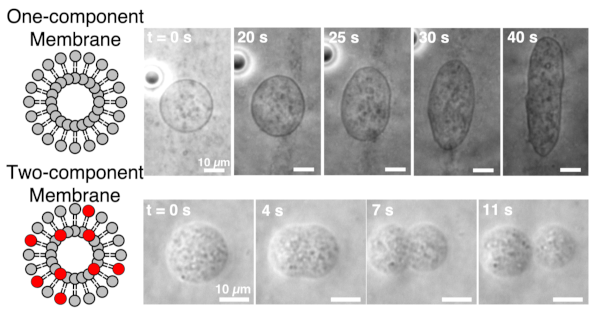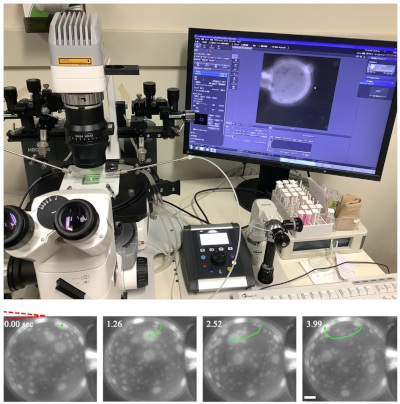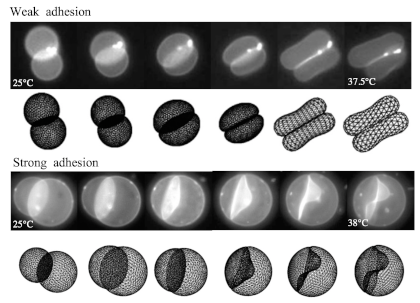Condensed Matter Experiment Ⅱ
Soft Matter and Biophysics
https://www.bio.phys.tohoku.ac.jp/
Staff
| Professor : | Masayuki Imai | |||
| Associate Professor : | Yuka Sakuma | |||
| Assistant Professor : | Minoru Kurisu |
Research
The life is molecular assembly system composed of amphiphilic molecules, macromolecules, and so on, i.e. so-called soft matter. However, it has unique features, such as metabolism, proliferation, homeostasis, and morphogenesis, which never observed in the condensed matter. The aim of our laboratory is to reveal underlying physics of the life system based on non-equilibrium soft matter physics. We are focusing on the following subjects.
1) Construction of autonomous and sustainable self-reproduction system like “Life”.

The life is characterised by the following four important properties; (i) It has a region surrounded by a membrane (Individual), (ii) It synthesizes substances that constitute individual from ingredients uptake from the environment based on the information polymer that encodes its own information (Metabolism), (iii) It reproduces the individual using synthesized substances (Self-Reproduction), and (iv) The reproduced offspring system has the property of self-production like the parent system (Heredity). The system that has these properties called autonomous and sustainable self-reproduction system. We have investigated the mechanism that governs the self-reproduction system by constructing the self-reproduction system using a group of simple molecules, which is different from biomolecules. We have succeeded in constructing a self-reproduction system, where the parent vesicle synthesizes energy molecules from ingredients uptake from the environment and produces offspring vesicles based on information polymer that encodes the information of the membrane by template polymerization on the membrane. We are currently conducting research to construct a more life-like system based on this system.
2) Measurements of “living state”.

The life system exhibits completely different properties in its living (non-equilibrium) state and dead (equilibrium) states, even though the both states are composed of the same substances. We have investigated the characteristics of the living state by measuring the physical properties of the living and dead states.
Since biological functions such as metabolism and signaling in biomembranes are regulated through the diffusion of proteins, membrane fluidity is an important factor governing the expression of these functions. Therefore, we have examined membrane viscosity, which is an index of fluidity, in model biomembranes. We will elucidate the factors that control the membrane fluidity through systematic studies using model biomembranes, where to approach fluidity of real biomembranes we will examine the effects of heterogeneity, asymmetry and polymer chain. In living cells, biomembranes are always in a non-equilibrium state where they are subjected to forces from the cytoplasm and actomyosine networks. Then the fluidity of biomembranes are expected to differ greatly from that of the model biomembrane. We will eventually measure the viscosity of biological membranes in the “living state” to elucidate the factors that control the flow characteristics of cells.
3) Mechanism of morphogenesis in multicellular organisms and its application to pathology

Life has evolved from unicellular to multicellular organisms, where multicellular organisms have developed various morphologies. We have investigated the morphogenesis of multicellular organisms (embryogenesis) by both experiments using artificial cells and simulations using mechanical models. Especially we have revealed the mechanical law that determine the morphology of few vesicular systems (doublets, triplets and quartets). On the other hand, the morphology of the multicellular tissues is very important for pathological diagnosis. Therefore, we are trying to elucidate the mechanical law governing the characteristic morphology of cancer cells based on our mechanical model and to apply it to pathological diagnosis.

